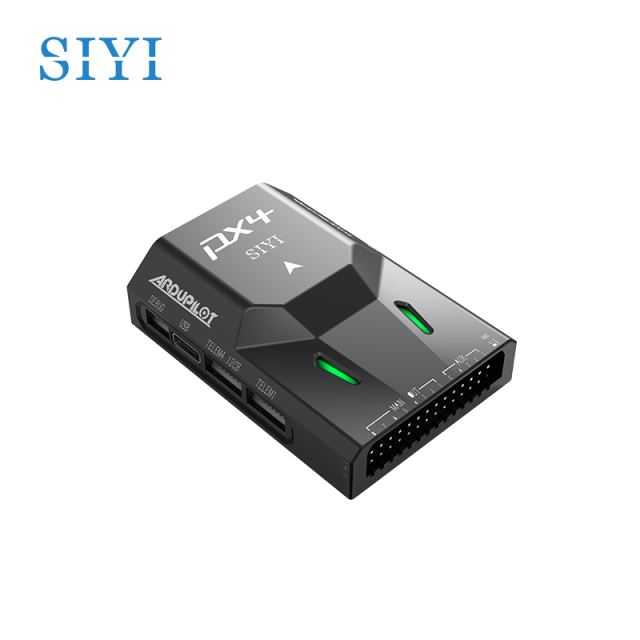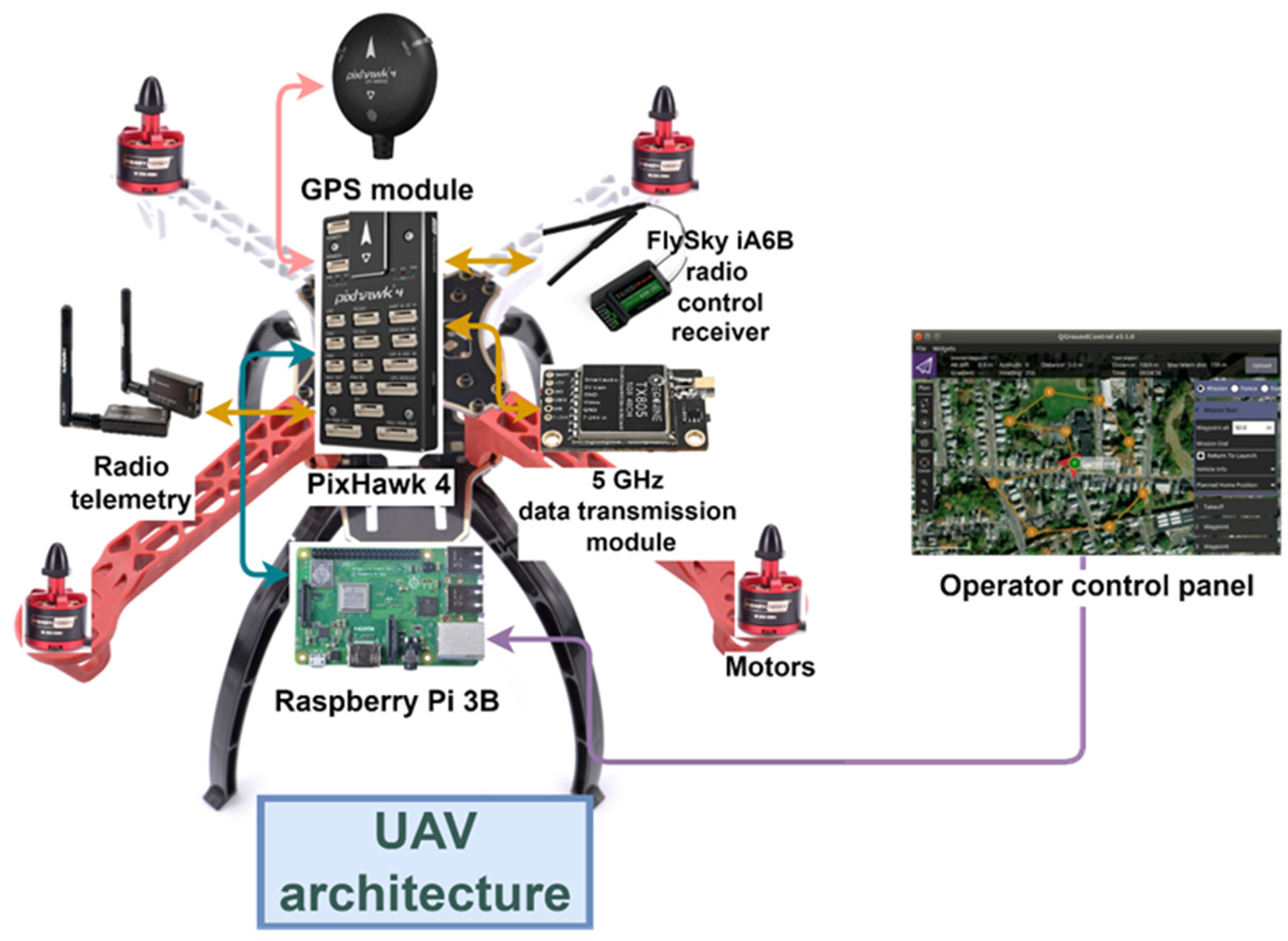SparkNavi Drone Flight Controller and GNSS/INS Made in Taiwan: Blazing A Trail in Drone Modern Technology
Recognizing the Crucial Attributes and Features of a Drone Trip Controller for Optimum Airborne Efficiency
The trip controller offers as the pivotal component in a drone's architecture, managing its motions and making sure security through a sophisticated interplay of sensors and data processing. Comprehending the crucial features and functions of these controllers is vital for making the most of aerial performance, as they dictate not just navigational accuracy but likewise total safety and dependability. With innovations in modern technology, the landscape of trip controllers is swiftly evolving, prompting a better exam of what truly defines ideal capability in this essential system. What implications do these advancements hold for both lovers and specialists in the area?
Review of Flight Controllers
When checking out the world of drone innovation, recognizing flight controllers is essential for both enthusiasts and experts alike. Flight controllers offer as the brain of the drone, orchestrating its motions and guaranteeing security during trip (SparkNavi drone flight controller and GNSS/INS made in taiwan). They process data from numerous sensing units, including measures, accelerometers, and gyroscopes, to preserve equilibrium and reply to pilot inputs properly
The design of flight controllers can vary dramatically, varying from fundamental versions made for entry-level drones to advanced systems furnished with advanced features for specialist applications. The combination of GPS capabilities makes it possible for specific navigating and positioning, while programmable firmware permits individuals to tailor trip features to match their particular requirements.
In addition, trip controllers are pivotal in assisting in interaction in between the drone and the push-button control, making it possible for real-time modifications and telemetry data transmission. Recognizing the different kinds of flight controllers, consisting of multi-rotor, fixed-wing, and hybrid systems, is crucial for choosing the proper model for a provided application. Eventually, a comprehensive understanding of flight controllers not only boosts the flying experience but likewise maximizes the efficiency and safety of drone procedures.
Trick Functions of Trip Controllers
Flight controllers play a crucial duty in taking care of a drone's trip characteristics by implementing numerous crucial functions that make certain security and responsiveness. One of the main features is the stabilization of the drone's orientation and altitude. This is achieved via the integration of different sensing units, consisting of accelerometers, gyroscopes, and measures, which continuously check the drone's position and motion.
.png)
An additional crucial function is the handling of control inputs from the pilot or autonomous systems. The flight controller interprets these inputs and changes the drone's motor speeds as necessary to accomplish the desired flight path. This includes managing yaw, roll, and pitch, which are important for maneuverability.
Furthermore, trip controllers are furnished with fail-safe devices. These functions are designed to react to essential circumstances, such as low battery degrees or loss of signal, by initiating predefined activities like returning to the launch factor or floating in area.

Essential Attributes to Take Into Consideration
When picking a drone trip controller to ensure optimum efficiency and dependability,Many necessary attributes must be taken into account. One essential aspect is the controller's handling power, which determines its capability to take care of complex flight algorithms and real-time information handling. A greater processing capability boosts responsiveness and security throughout trip.
One more crucial function is the number of supported trip settings. A flexible flight controller need to supply different modes, consisting of acro, altitude hold, and GPS-assisted settings, dealing with different pilot ability degrees and operational scenarios. Furthermore, the existence of built-in safety and security functions, such as fail-safes and geofencing, can considerably enhance functional protection.
Compatibility with various interaction protocols is also important, as it guarantees seamless integration with other tools and peripherals, such as remote controllers and telemetry systems. Additionally, the controller's firmware have to be easy to use and routinely upgraded to integrate brand-new functions and optimizations.
Assimilation With Sensing Units and Systems
A trip controller's efficiency is greatly affected by its ability to incorporate with different sensing units and systems. This assimilation is essential as it enables the trip controller to obtain real-time data needed for reliable trip management. Key sensors consist of GPS, inertial measurement units (IMUs), barometers, and magnetometers, each providing vital details concerning the drone's placement, elevation, and positioning.

In addition, progressed flight controllers support assimilation with haul systems, consisting of video cameras and various other sensing units, making it possible for improved functionalities such as autonomous navigation and barrier evasion. This interconnectedness not only improves the drone's operational abilities but likewise expands its application prospective across different sectors, from aerial digital photography to agricultural surveillance. Therefore, a well-integrated trip controller is fundamental for accomplishing optimal aerial efficiency and guaranteeing the integrity of drone operations.
Tips for Optimizing Performance
To maximize the performance of your drone, several key methods can be employed that emphasis on optimizing both equipment and software elements. Guarantee that the flight controller firmware is up to day.
Following, adjust your sensors, including the accelerometer and gyroscope, to ensure exact analyses. Appropriate calibration decreases drift and enhances flight stability, specifically throughout complex maneuvers. Additionally, take into consideration updating the hardware elements, such as propellers and electric motors, to improve drive and efficiency. Top notch propellers can decrease drag and rise flight time.
Moreover, maximize your drone's weight by lessening unnecessary hauls. A lighter drone not only executes much better but likewise extends battery life. Finally, fine-tune your flight setups, consisting of PID (Symmetrical, Indispensable, Acquired) worths, to accomplish smooth and receptive handling. By implementing these strategies, drone drivers can dramatically improve aerial performance, leading to an extra effective and pleasurable flying experience.
Final Thought
Finally, an extensive understanding of drone flight controllers is important for enhancing airborne performance. The integration of vital functions and vital functions, including handling power and security systems, straight affects the stability and ability to move of drones. Efficient linked here communication with different sensors and systems plays an important role in attaining accurate navigating and operational effectiveness. By focusing on these elements, drivers can significantly boost the performance and dependability of their drone systems in varied applications.
Flight controllers offer as the mind of the drone, orchestrating its motions and making certain security during trip.Flight controllers play a pivotal duty in managing a drone's flight characteristics by click here for info executing several crucial features that ensure security and responsiveness. The flight controller analyzes these inputs and changes the drone's motor speeds appropriately to accomplish the wanted trip course.Numerous vital attributes need to be taken right into account when selecting a drone flight controller to guarantee optimum performance and reliability. Thus, a well-integrated flight controller is basic for attaining optimum airborne efficiency and making sure the dependability of drone procedures.